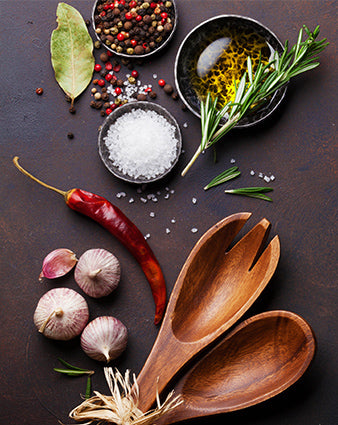The Magical History of Pomanders: From Medieval Charm to Modern Delight 🍊
Hello, fellow history enthusiasts and fragrance aficionados! Today, we're embarking on a whimsical journey through time to uncover the enchanting history of pomanders. These delightful aromatic balls have a rich and magical history that spans centuries, from their origins in medieval Europe to their modern-day popularity. So, grab your imaginary time-traveling cloak and let's explore the fascinating world of pomanders...
Chapter 1: The Medieval Origins 😷 
Our journey begins in the enchanting world of medieval Europe, where pomanders made their grand entrance. The word "pomander" is derived from the French "pomme d'ambre," meaning "apple of amber." These aromatic treasures were initially concocted as a remedy against the plague, believed to ward off the disease with their powerful scents. Each pomander was a small, round ball made of fragrant materials like cloves, cinnamon, and other spices. They were often encased in a decorative holder, making them both functional and fashionable.
Chapter 2: Symbolism and Superstition ✨
Pomanders were not just a means to combat the plague; they were also deeply symbolic and carried mystical significance. Many believed that carrying a pomander could protect them from evil spirits, illness, and bad luck. They were often worn as amulets or hung on chains as pendants. These fragrant orbs also played a role in courtship, as they were exchanged as tokens of affection. Young lovers would gift pomanders to each other, symbolizing their enduring love and the desire for a sweet-smelling relationship.
Chapter 3: The Renaissance Revival 👑
As time passed, the popularity of pomanders waned, only to experience a renaissance during the 16th century. The Renaissance brought with it a renewed fascination with all things beautiful and aromatic. Pomanders were elevated to new heights of craftsmanship and elegance. Intricate designs, often made of precious metals, were crafted to hold the fragrant mixture. These exquisite pomanders became status symbols among the European nobility, adorning the chambers of queens and duchesses.
Chapter 4: Pomanders in Everyday Life 🍊
By the 17th and 18th centuries, pomanders had become an integral part of daily life. People carried them to mask the unpleasant odors of the time, given that bathing was a rare luxury. These little scented orbs were a fashionable accessory, and their fragrances would vary according to the seasons. For example, citrus-scented pomanders were popular in the summer, while spicy and warm aromas were preferred in the winter.
Chapter 5: The Modern Resurgence 🎄
In the 21st century, the magic of pomanders is far from lost. While we may no longer rely on them to ward off the plague, these delightful spheres have found their way into our homes and hearts once again. Modern pomanders are often made as DIY projects, combining creativity and aromatherapy. Crafty individuals create personalized pomanders using essential oils, dried flowers, and various spices.
Today, pomanders are not just kept in drawers or hung in wardrobes; they can be found in sachets, potpourri, and even as decorative elements in weddings and events. Their enchanting history and aromatic allure continue to captivate us, reminding us of a time when a fragrant ball was more than just an ornament—it was a symbol of love, protection, and enchantment.
Conclusion: The Fragrant Legacy of Pomanders 🍊
As we wrap up our journey through the magical history of pomanders, we are reminded of their enduring charm and versatility. From their humble beginnings as plague protectors to their revival in the Renaissance and their modern reinvention, pomanders have transcended time and culture, leaving a fragrant legacy that continues to captivate our senses.
So, whether you're making your own DIY pomander, hanging one in your closet, or simply appreciating their history, remember that these aromatic orbs are more than just pretty decorations—they're a link to a bygone era of superstition, romance, and the enduring power of fragrance.







